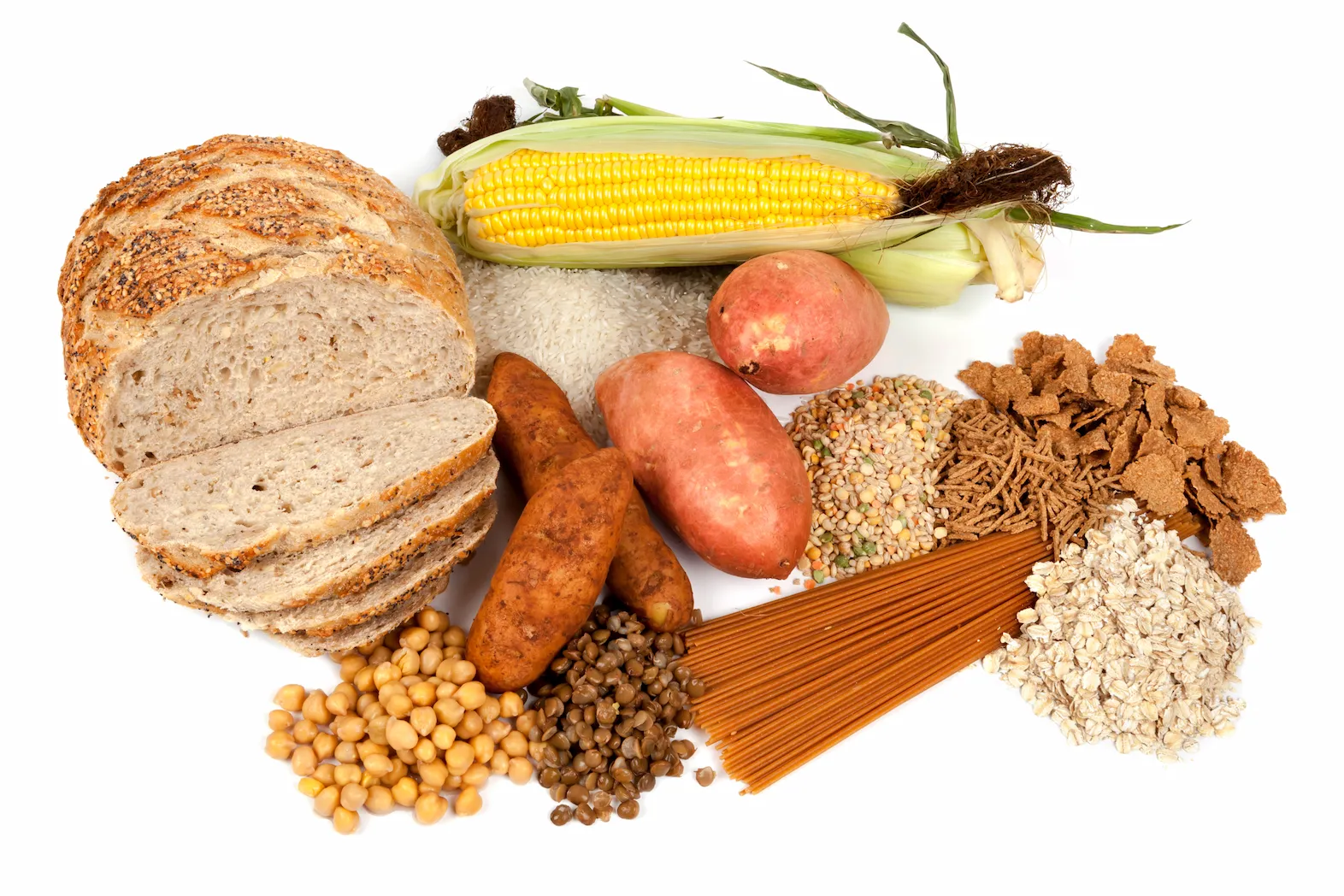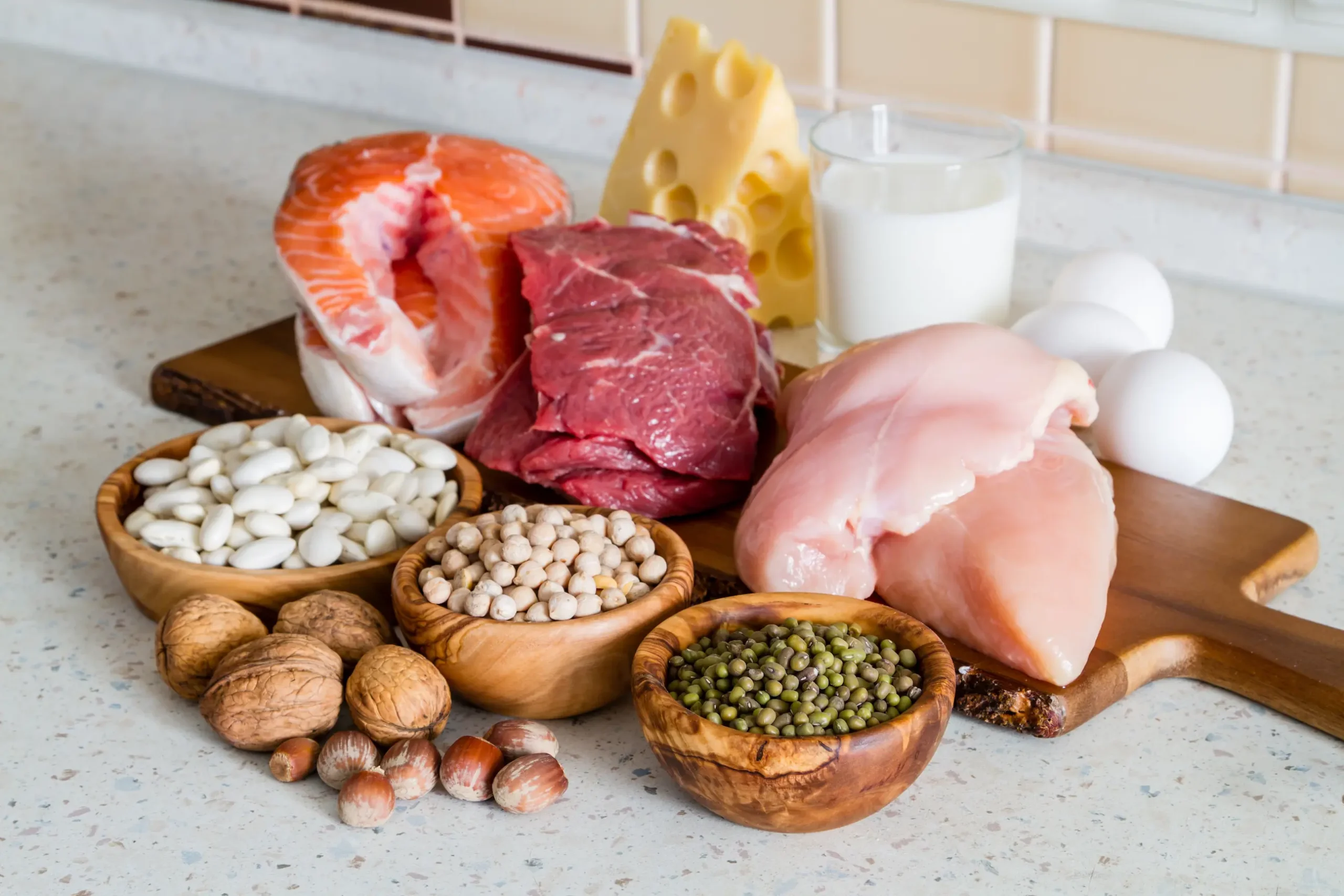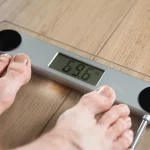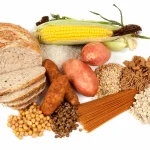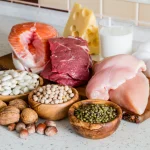Peri-workout nutrition - part 3.
What to eat after a workout?
If you aim at a quick recovery after a workout or competition, waste no time but have a meal reach in absorbable carbohydrates directly after exercise, even if it is not an “ideal” meal. Dumplings with quark, vegetables and compote shown in the picture will be a better choice than most tasty but fatty and stodgy dishes of Poland’s highland cuisine, like pork ribs with toasted potatoes and fried cabbage, sour cabbage soup with smoked meat, or hunter’s stew. Kalatówki PTTK mountain hostel. Photo by Michał Miśta.
Authors: Klaudia Buczek, MSc Eng., and Michał Miśta, MSc Pharm.
Contents
- Introduction
- Nutrition goals after exercise
- Fluid and electrolyte replacement
- Carbohydrates, insulin and resynthesis of glycogen
- Protein after a workout
- Fats after exercise
- Conclusion
- Bibliography
You don’t want your efforts to be wasted. If you don’t supply necessary nutrients to your body after a workout or competition, your recovery, the key to success in sport, may not proceed in the way you would wish. Optimised post-exercise nutrition is especially important when you have several workout units during the day and you want to quickly recover your energy.
Introduction
Physical exercise is the time when catabolic processes dominate in your body. Muscular activity leading to microinjuries of muscle fibres, depletion of glycogen reserves, increased level of cortisol, called a stress hormone, contributing to fat degradation, protein degradation and mobilisation of body energy reserves, or release of free radicals damaging cell structures, are just a few examples. You must remember that, metabolically, an increase in your fitness takes place after a completed workout and depends not only on its quality and intensity, but also on effective inhibition of catabolic processes, and quick initiation of recovery processes, i.e. making the body enter the state of anabolism. Key factors for an optimal metabolic recovery are adequate intervals between workouts, including a proper amount of sleep and a well-chosen diet.
Nutrition goals after exercise
Nutrition after a workout aims at three basic goals:
- fluid and electrolyte replacement,
- resynthesis of liver and muscle glycogen resources,
- providing the body with a source of amino acids to rebuild damaged muscle fibres.
Each of them is necessary to regenerate your body.
Fluid and electrolyte replacement
You could read about hydration before exercise, signs of dehydration, and strategy of fluid replacement during a workout in two previous parts of our cycle:
- Peri-workout nutrition – part 1. What to eat before a workout.
- Peri-workout nutrition – part 2. What to eat during a workout.
You probably know that water, the main blood component, decides not only about supplying oxygen and nutrients to your body cells, but also about effective removal of toxic metabolites, such as urea formed in the process of protein degradation, creatinine, uric acid (product of purine base degradation), substances created after haemoglobin breakdown: bilirubin, urobilinogen and urobilin (main urine pigment) or oxalic acid and its salts (oxalates). Water also provides for your body thermoregulation.
What to drink after a workout?
To restore balance after a workout, you should replace both water and electrolytes. Sodium and chlorine ions (constituting a total of 90% electrolytes lost with sweat), followed by potassium, magnesium and calcium ions, are critical. If your exercise was not very intense or you do not need to recover quickly for the next workout, it would be sufficient to drink medium- or highly-mineralised water, or a good quality “zero calorie” sports drink. However, you need to know that water is a hypotonic drink, meaning that its osmotic pressure is lower than plasma. Therefore, water is characterised by rapid absorption, leading to plasma dilution and increased rate of urine output. If you want rapid hydration and speedy recovery after a workout, isotonic drinks will be a better choice. Interestingly enough, good hydration properties are also found in… skimmed milk. Due to the content of electrolytes (lactose), protein (whey and casein) and many vitamins, milk may fulfil a role of a recovery drink, both after endurance and strength exercise. However, it should not be used by persons with lactose intolerance or those sensitive to milk proteins.
Amount of fluids after a workout
In order to estimate the amount of fluids lost during physical exercise, it would be best to measure the difference in your body weight before and after a workout. After a completed workout, you should gradually replace fluids up to 150% of the lost body weight. It is essential that post-workout hydration be planned over time, providing small amounts of fluids rich in electrolytes, taken every 20 – 30 minutes until large amounts of straw-coloured urine are produced (you can find more information on the technique of hydration self-study based on the observation of urine colour in Part 1 – what to eat before a workout). Remember not to drink the whole amount of water at once, since a rapid increase in blood volume has a diuretic effect and increases a risk of hyponatremia (blood sodium deficit)!
In order to estimate the amount of water lost during physical exercise, it would be best to measure the difference in your body weight before and after a workout. After a completed workout, you should gradually replace fluids up to 150% of the lost body weight.
Carbohydrates, insulin and resynthesis of glycogen
As a result of having a meal rich in absorbable carbohydrates, the blood glucose level rapidly increases, thus leading to release of insulin by the pancreas. This hormone reveals a strong anabolic effect, which means that it stimulates restructuring and repair of tissues in your body, being responsible e.g. for stimulating glucose transport from the bloodstream to muscle and liver cells. The glucose absorbed from cells is then used for glycogen resynthesis. A quick recovery of glycogen reserves is especially important if your exercise is the endurance type, and if you work out more than once a day.
Anabolic “window of opportunity”
When you work out at high frequency and you want a rapid recovery after the workout, do not delay carbohydrate intake after you finish your workout. Within the first 30 – 60 minutes after workout, your muscle cells show an increased permeability for glucose, which is related to translocation of the glucose transporter (GLUT-4) from the cell interior to membrane, leading to a more effective glucose uptake from the bloodstream. This phenomenon ensures higher availability of glucose, a substrate for glycogen resynthesis is cells, resulting in the fastest possible glycogen restoration! After an hour, muscle glycogen resynthesis slows down to about 10 – 30% of the initial value. To put this knowledge into practice, do not delay drinking a glucose-containing isotonic drink, an energetic drink, carbohydrate snack or a meal rich in carbohydrates with a high glycaemic index, trying to consume it right after exercise, especially if you plan subsequent workout units fairly soon. When compiling subsequent meals, use a high-carbohydrate diet, which will result in a complete glycogen resynthesis within 24 hours.
Endurance sports
In order to achieve a maximum glycogen resynthesis in endurance sports, take 8 – 12 g carbohydrates a day per kilogram body weight. A specific amount of carbohydrates, however, depends on the workout intensity and volume. So, what should you eat after an endurance workout?
One workout/day (or less)
If the interval between your workout sessions is long (you work out once a day or less), the most important aspect in glycogen resynthesis is a total intake of carbohydrates during the day. In practice, however, you may increase their proportion in the post-workout meal. It is worth placing importance on complex carbohydrates from conventional food, choosing such products as groats, rice, oat flakes or wholegrain pasta.
More than one workout/day
A different procedure, however, applies to subjects who work out more than once a day, meaning the time to restore glycogen is shortened. In such situations, take 1 – 1.2 g of carbohydrates per kilogram body weight within the first 3 – 5 hours after exercise [4,5]. Place importance of the sources of carbohydrates with a high glycaemic index >70, e.g. dried fruit, white bread, white pasta or white rice. For example, a female athlete with a body mass of 60 kg should have about 60 g of carbohydrates every hour in the first 4 hours after exercise. In practice, such amount of carbohydrates can be found in 8 rice cakes (80 g), 2 fistfuls of dried dates (90 g), 3 glasses of orange juice (600 ml), or 80 g rice. It may also be helpful to ingest caffeine, which increases the rate of carbohydrate absorption from the gastrointestinal tract. A recommended dose is 3 – 6 mg per kilogram body weight [4]. So, if you weigh 60 kg, drinking a double espresso will supply 3 mg of caffeine per kilogram body weight Another helpful strategy to quickly restore muscle glycogen is to combine carbohydrates and protein in your post-workout meal. The addition of protein (0.2 – 0.4 g per kilogram body weight/ h) will increase the rate of muscle glycogen resynthesis, if the intake of carbohydrates is 0.8 g per kilogram body weight. In the event of higher carbohydrate intake, the extra protein will not additionally increase the glycogen resynthesis [4,5].
Strength workout
Resistance training does not normally deplete glycogen reserves to such an extent that would require immediate carbohydrate replacement. According to available studies, normal carbohydrate intake restores the glycogen reserves within 24 hours. Therefore, carbohydrate intake is not so important for a person doing resistance workout less than once a day.
Products rich in carbohydrates, such as wholemeal bread, potatoes, sweet potatoes, pasta, rice, oat flakes, groats, corn or legumes (e.g. chickpeas, lentils or beans) are a good source of carbohydrates, constituting basic fuel for muscles and the nervous system.
Protein after a workout
ZYou have probably heard of an anabolic “window of opportunity”, not only with reference to carbohydrates, but also proteins, according to which a post-workout meal rich in protein should be taken immediately after a finished workout. Recent studies, however, cast doubts on the above indicating that a single training session may increase muscle protein synthesis even to 24 – 48 h [2, 3, 4] and the key factor influencing its effectiveness is a summary protein intake during the whole day. The duration of an increased activity is individual and depends among others on the type of training stimulus. So, although it is not worth delaying carbohydrate intake after exercise, you do not have to hurry to eat a protein-rich meal directly after a finished workout, but you may take time to prepare it at home, and the protein included in the meal will most certainly be used to effectively restore your muscle fibres. From a practical point of view, having a meal 2 hours after workout will be completely sufficient.
Amount of protein
Post-workout meal should include between 0.25 – 0.4 g protein per each kilogram of body weight [2], or, to make it simple, 20 – 40 g protein [3]. In practice, 20 g protein is included in 200 g cottage cheese, 120 g lean quark, 100 g chicken breast or 25 g whey protein isolate. In addition, a post-workout meal should include 700-3000 mg leucine (essential amino acid, which promotes muscle protein synthesis) [3, 4]. High leucine content can be found e.g. in dairy products, including protein powder supplements, meat, fish or eggs [6].
Quality of protein
Considering the issue of the source of protein in your meal, you should also think about the protein quality. By speaking of quality we mean protein digestibility, as well as an amino acid profile, especially the content of essential amino acids, including leucine, which affect its absorption and use by the body. Animal products, such as dairy or meat, thanks to their better digestibility and more beneficial amino acid profile, will better stimulate the muscle protein synthesis than plant products [6]. However, do not completely resign from plant sources of protein, trying to balance meals in such a way as to include both plant and animal protein products.
Regularity
A growing number of evidence indicates that muscle fibre regeneration, as well as building muscle mass is mostly facilitated by regular protein intake during the day [1, 2]. or this reason, it seems best to eat 4 – 5 regular meals, each of which contains the 20 – 40 g protein. Numerous studies also indicate that the key aspect for muscle recovery and build-up is also the total protein content during the day. Athletes should consume 1.4 – 2 g protein per kilogram body weight/day. In certain cases, these amounts will be even higher [3]. It all depends on individual issues, including the type and number of workouts and the fitness level of your body.
Whey protein supplementation
Although protein supplements are not indispensable elements of a healthy diet, and it is usually possible to cover the protein demand using conventional products, in certain situations an additional use of a protein powder supplement may be very helpful. One of the most widely used supplements in sport is whey protein, characterised by high absorption. It is available in two forms which differ in the production process and composition:
- WPC – Whey Protein Concentrate containing approximately 80% protein (this amount may differ depending on the manufacturer). It is characterised by a low content of milk fat and lactose.
- WPI – Whey Protein Isolate undergoes further filtration processes, which help remove most of non-protein components, like fats and lactose. That is why it contains more, almost 90% protein.
What to choose in practice? Both WPC and WPI is characterised by high digestibility, high leucine content and rapid (WPC) and very rapid (WPI) absorption. Thus, both products will be a good choice. The difference is in price (WPCs are cheaper than WPIs) and a lower lactose content in WPI, which may be significant for subjects suffering from lactose intolerance and those with gastrointestinal problems.
BCAA supplementation
BCAA means Branched-Chain Amino Acids, i.e. valine, leucine and isoleucine. The above amino acids are 3 of 10 essential amino acids, i.e. such that must be delivered with food, since your body is not able to produce them by itself. These include the above-mentioned: valine, leucine and isoleucine, as well as phenylalanine, lysine, methionine, threonine and tryptophan and also two relatively exogenous amino acids (needed by the body in certain conditions, especially during growth) – arginine and histidine. As mentioned above, leucine, a component of BCAA, is an amino acid promoting muscle protein synthesis. Logic tells us that BCAA will be an ideal supplement for muscle development and regeneration. However, available studies deny the popular belief of its effectiveness. According to the Australian Institute of Sport, BCAA has been qualified to Group C supplements, i.e. a group of supplements whose effectiveness… has not been confirmed. Therefore, it is not worth using them, and the money saved could be used for providing an optimal protein intake during the day, so as to deliver all essential amino acids at the same time, preferably from natural sources. What it means in practice? If you eat a product rich in complete protein after a workout, you can increase the muscle protein synthesis even twice as much as when you eat BCAA alonesyntezę białek mięśniowych niż spożywając same BCAA [7]!
To ensure an optimal muscle recovery after a workout, 4 – 5 regular meals are recommended, each of which containing 20 – 40 g protein.
Fats after exercise
Although fats are necessary macroelements of a balanced diet, they are not essential in a post-workout meal. Fats ingested directly after exercise may even have a negative effect of slowing down carbohydrate absorption from the gastrointestinal tract. You should also be careful not to use their excessive amounts, especially if you have your post-workout meal in the evening (greasy, stodgy meals lower the quality of sleep, and thus regeneration), and if you care for rapid muscle regeneration before another training session (fat delays gastric emptying, as well as absorption and use of nutrients from the meal). Fats should be included in the next complete meal, so that their daily amount could reach 20-30% energy per 24 hours [4].
Conclusion
The role of carbohydrates and protein in the post-exercise period is best emphasised by an English saying “Carbohydrate is King, Protein is Queen”. Carbohydrate, as King, enables restoration of muscle and liver glycogen reserves, constituting and undisputed priority in post-workout nutrition, especially if you aim at rapid recovery. On the other hand, complete protein, as Queen, is a source of amino acids necessary to rebuild damaged muscle fibres. This saying also emphasizes the importance of balancing carbohydrates and protein, which should be 4:1 in a meal supporting recovery after exercise. Regardless of providing an adequate portion of carbohydrates and protein, make sure that your post-workout meal contains enough vegetables which are a source of many precious nutrients, such as minerals, vitamins or antioxidants. An essential element of a nutritional jigsaw in the post-workout period is to provide adequate body hydration.
Finally, please remember that all the advice presented in our articles is general in nature. There is no one good solution for everybody. Relative proportions and time of consuming particular nutrients or supplements may significantly differ, depending on the body weight, sex, age, type of physical activity, workout goals, potential food intolerance or deficits, and individual needs of your body, or personal preferences. Therefore, if you have any doubts after reading this article, feel free to contact us. Our sports dietician will help you plan an optimal nutrition strategy, select appropriate nutrients adjusting them to your training goals, and will provide you with valuable guidelines, so as to effectively support your recovery, increase exercise performance to reach optimal results during intense workouts.
Bibliography
- Schoenfeld BJ, Aragon A, Wilborn C, Urbina SL, Hayward SE, Krieger J. Pre- versus post-exercise protein intake has similar effects on muscular adaptations. PeerJ. 2017 Jan 3;5:e2825. doi: 10.7717/peerj.2825. Erratum in: PeerJ. 2017 Aug 1;5: PMID: 28070459; PMCID: PMC5214805.
- Moore DR. Maximizing Post-exercise Anabolism: The Case for Relative Protein Intakes. Front Nutr. 2019 Sep 10;6:147. doi: 10.3389/fnut.2019.00147. PMID: 31552263; PMCID: PMC6746967.
- Jäger R, Kerksick CM, Campbell BI, Cribb PJ, Wells SD, Skwiat TM, Purpura M, Ziegenfuss TN, Ferrando AA, Arent SM, Smith-Ryan AE, Stout JR, Arciero PJ, Ormsbee MJ, Taylor LW, Wilborn CD, Kalman DS, Kreider RB, Willoughby DS, Hoffman JR, Krzykowski JL, Antonio J. International Society of Sports Nutrition Position Stand: protein and exercise. J Int Soc Sports Nutr. 2017 Jun 20;14:20. doi: 10.1186/s12970-017-0177-8. PMID: 28642676; PMCID: PMC5477153.
- Vitale K, Getzin A. Nutrition and Supplement Update for the Endurance Athlete: Review and Recommendations. Nutrients. 2019 Jun 7;11(6):1289. doi: 10.3390/nu11061289. PMID: 31181616; PMCID: PMC6628334.
- Alghannam AF, Gonzalez JT, Betts JA. Restoration of Muscle Glycogen and Functional Capacity: Role of Post-Exercise Carbohydrate and Protein Co-Ingestion. Nutrients. 2018 Feb 23;10(2):253. doi: 10.3390/nu10020253. PMID: 29473893; PMCID: PMC5852829.
- van Vliet S, Burd NA, van Loon LJ. The Skeletal Muscle Anabolic Response to Plant- versus Animal-Based Protein Consumption. J Nutr. 2015 Sep;145(9):1981-91. doi: 10.3945/jn.114.204305. Epub 2015 Jul 29. PMID: 26224750.
- Fuchs CJ, Hermans WJH, Holwerda AM, Smeets JSJ, Senden JM, van Kranenburg J, Gijsen AP, Wodzig WKHW, Schierbeek H, Verdijk LB, van Loon LJC. Branched-chain amino acid and branched-chain ketoacid ingestion increases muscle protein synthesis rates in vivo in older adults: a double-blind, randomized trial. Am J Clin Nutr. 2019 Oct 1;110(4):862-872. doi: 10.1093/ajcn/nqz120. PMID: 31250889; PMCID: PMC6766442.
- D. Śliż, A. Mamcarz, Medycyna Stylu Życia, PZWL Wydawnictwo Lekarskie, Warszawa, 2018
- A. Bean, Żywienie w sporcie, Zysk i Spółka Wydawnictwo, Poznań 2019
- B. Frączek, J. Krzywański, H. Krzysztofiak, Dietetyka sportowa, PZWL Wydawnictwo Lekarskie, Warszawa, 2019
- K. Austin, B. Seebohar, Performance Nutrition. Applying the Science of Nutrient Timing, Human Kinetics, 2011
- Lauren A. Antonucci, High-Performance nutrition for masters Athletes, Human Kinetics, 2022
 EN (GBP)
EN (GBP) PL (PLN)
PL (PLN) EN (EUR)
EN (EUR)

